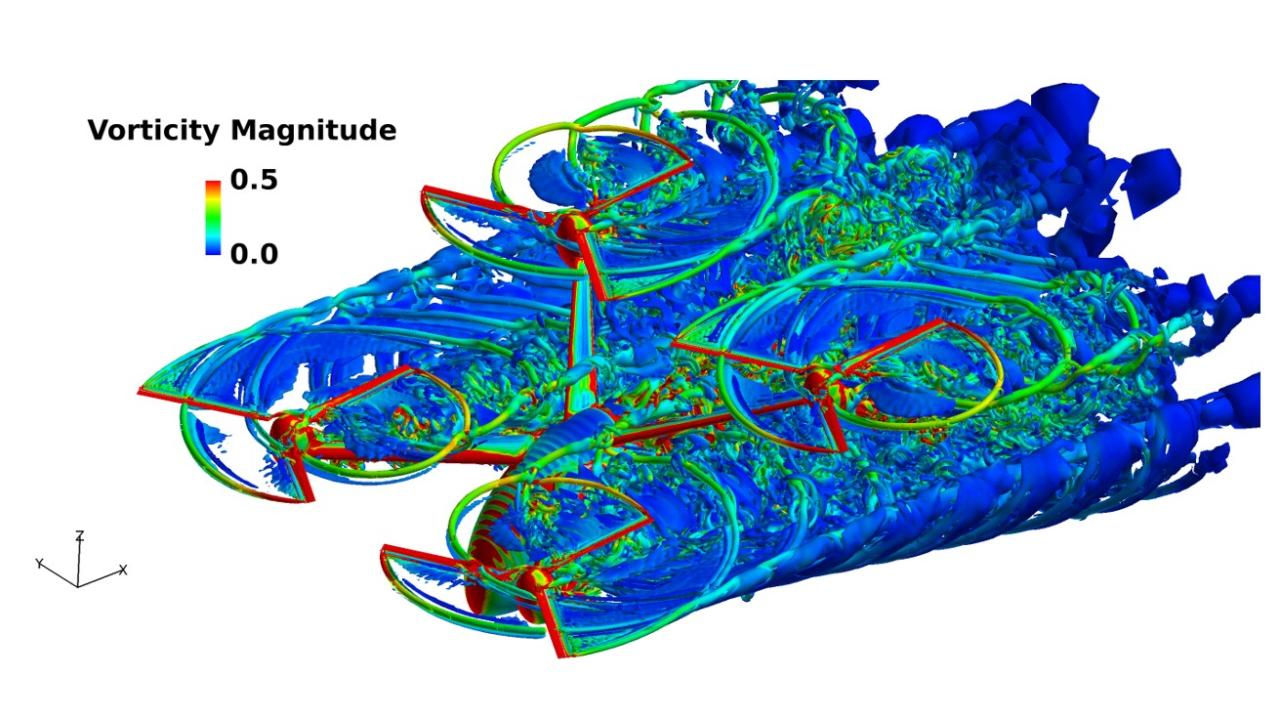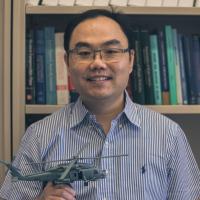
Simulations for a new generation of aircraft
Mechanical and aerospace engineering (MAE) associate professor Seongkyu Lee will join the renewed multi-institutional Vertical Lift Research Center of Excellence (VLRCOE) at Pennsylvania State University, a $7.5M project funded by the U.S. Army, U.S. Navy and NASA. This is Lee’s second time participating in VLRCOE at UC Davis.

In a new five-year project through the center, Lee will study unsteady aerodynamics and acoustics of a new generation of aircraft design for urban air mobility (UAM). Lee will use high-fidelity computational fluid dynamics (CFD) to predict the detailed flow fields and physical noise sources of the aircraft and develop faster and more accurate multi-fidelity simulation tools.
Urban air mobility is an emerging field focused on developing vertical take-off and landing vehicles as “air taxis” to transport people and goods over short distances in cities. The field has the potential to revolutionize transportation, but making sure the aircraft are quiet to be acceptable is a big challenge. If the vehicles are too loud, residents will reject them, so designers need to be able to understand and predict how much noise their aircraft will make.
Tilted-wing aircraft like the V-22 Osprey and NASA’s GL-10 are becoming a popular design choice. These craft have prop-rotors that are perpendicular to the wing when flying, but tilted lower during takeoff and landing. This helps generate vertical lift and increase performance during cruise, but it causes complex aerodynamic interactions with the wing that make predicting noise challenging.
“This kind of problem of wing interaction will be very important in the future, and so we aim to advance our knowledge of this interactional aerodynamics, performance and noise in advanced configurations,” Lee said.

Lee’s group, in collaboration with Professor Ken Brentner at Pennsylvania State University, will work to solve this problem by developing fast and accurate design tools for designing tilted-wing aircraft.
The best way to understand the aerodynamic and aeroacoustic interactions of tilted-wing aircraft is with complex fluid dynamics (CFD) simulations. The simulations solve thousands of complex fluid physics equations, which means they’re highly-accurate and detailed, but it can take up to a week to simulate even a single test case. This is much too slow for researchers who need to rapidly test and iterate their designs, so the team will use CFD to develop multi-fidelity models that are both fast and accurate.
Lee and Brentner will simulate the same few test cases with CFD software and the medium-fidelity models of rotor wake and look at them side-by-side. This will help them understand the limitations of the wake models and where they can use the detailed CFD database to improve them.
Combining the complex CFD with the efficient medium-fidelity wake models will result in multi-fidelity simulation tools for tilted-wing aircraft that are both accurate and efficient, and help researchers predict the noise their craft will make.
“Our first goal is to advance our knowledge in unsteady aerodynamics and acoustics in this new aircraft,” he explained. “Our second goal is to develop fast computational tools, but with much improved predictive capabilities”
Lee is excited both by the prospect of helping the field and the opportunities for students. The project will fully fund a Ph.D. student in both his and Brentner’s labs, as well as give more students the experience to work on important problems for an emerging field.
“This vertical lift research community is growing and so are the opportunities for students,” he said. “I’m very glad that students are working on this exciting aircraft research at universities and then finding jobs in the same field and contributing to the vertical lift community.”
